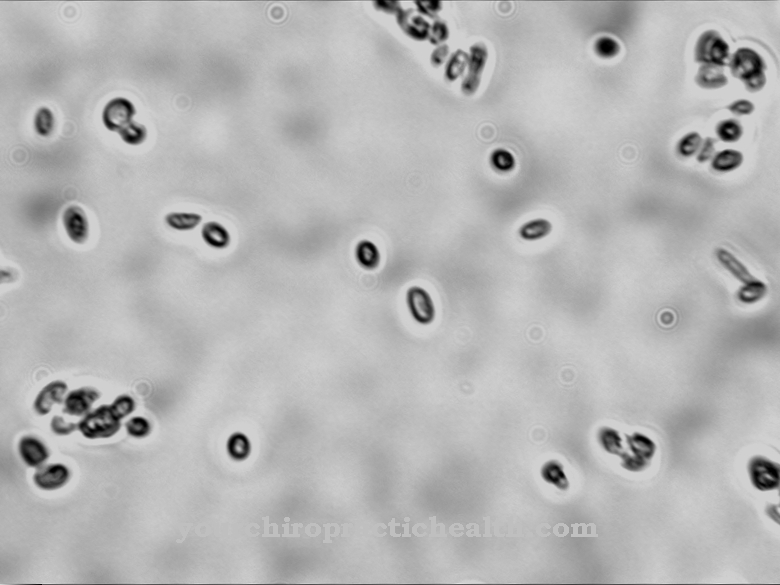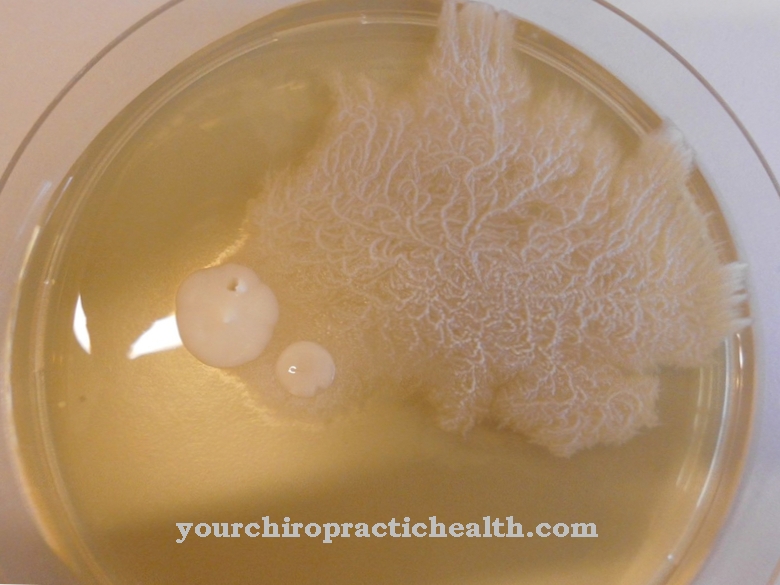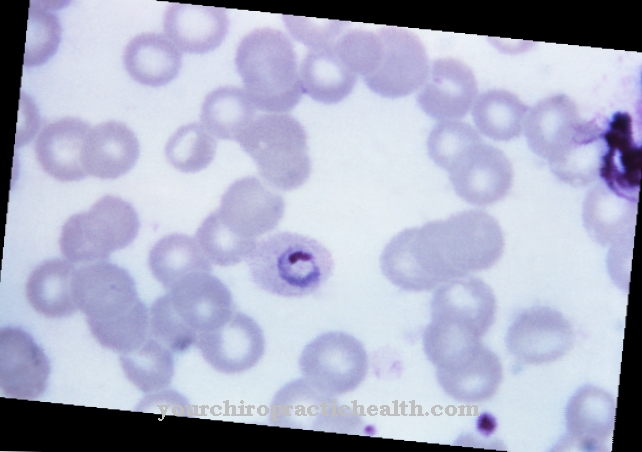Streptococcus sanguis are bacteria of the genus streptococci, which belong to the group of Viridans streptococci and are a natural component of the human oral flora. The bacteria prevent the oral flora from being colonized by pathogenic bacteria and thus prevent tooth decay, for example. However, if they are carried over into the blood, the bacteria can cause inflammation of the inner lining of the heart (endocarditis).
What are Streptococcus sanguis?
Streptococci are a genus of different bacteria. They have gram-positive properties, an approximately spherical shape and a mostly chain-like arrangement. The viridans streptococci are a subspecies of the streptococci. They are not an actual species, but a group of different Streptococcus species with similar characteristics. Viridans streptococci are among the "greening streptococci" of the oropharynx and are therefore also known as oral streptococci. These bacteria are the number one bacterial pathogen for slow-going heart wall infections, although most viridans streptococci are non-pathogenic.
The Veridans streptococci include the bacterial species Streptococcus sanguis. These streptococci are part of the natural flora of the oral mucosa and protect this area from pathogenic types of bacteria. Nonetheless, the bacteria can cause serious illnesses by entering the bloodstream.
Occurrence, Distribution & Properties
The bacterial species Streptococcus sanguis is a natural inhabitant of the human oral cavity and in this context occurs primarily in plaque. The bacterial species is facultatively anaerobic. Representatives of the species therefore grow optimally in the presence of oxygen, but can also survive in an oxygen-free environment by changing their metabolism.
In an oxygen-free environment, they fermentation and anaerobic respiration to generate energy. This means that they oxidize organic substrates to CO2 and H2O. The energy gain from anaerobic cellular respiration is higher than the energy gain from pure fermentation metabolism. No growth occurs at 10 ° C or less. Even in nutrient media with 6.5% NaCl, the bacteria can no longer operate a metabolism.
The human body is the preferred habitat of the bacterial species, but the bacteria are also found in animal plaque. All Viridans bacteria have one thing in common: they are greenish streptococci that show α-hemolysis within the blood agar. So when the bacteria get into the blood, they attack the erythrocytes and break down the hemoglobin.This creates greenish products that gave the bacteria group its name.
Especially the streptococci of the species Streptococcus sanguis reach the heart when they enter the blood via the bloodstream, where they can cause an inflammation of the inner lining of the heart. Viridans streptococci do not have a polysaccharide capsule. Nor are they equipped with Lancefield group C, A or B antigens, which distinguishes them from other streptococci.
Meaning & function
Basically, bacteria of the species Streptococcus sanguis are useful for humans. The colonization of the oral flora with the streptococci prevents, for example, a colonization of the same area with Streptococcus mutans. These bacteria are involved in the development of tooth decay, as they form adherent exopolysaccharides on the one hand and lactic acid on the other and thus attack the tooth substance.
Due to the presence of the Streptococcus sanguis in the dental plaque and the oral flora, the environment for the bacterial species Streptococcus mutans loses its advantages. In this way, Streptococcus sanguis prevent dental diseases such as caries in the broadest sense.
The bacteria do not live in the human oral flora at the expense of the host, but in a mutual beneficial relationship with the host. This distinguishes them from pathological parasites that live at the host's expense and thus harm the host organism.
The benefit of Streptococcus sanguis is only given within the oral flora. If the streptococci are carried into the blood, they attack the red blood cells and can reach other organs where they can cause disease.
Illnesses & ailments
Various diseases can occur in connection with bacteria of the species Streptococcus sanguis. One of the most important diseases in this context is endocarditis, which corresponds to inflammation of the inner lining of the heart. The inner lining of the heart lines the heart cavities and parts of the veins and arteries close to the heart and is structurally involved in the valve leaflets. Heart inflammation is usually fatal if left untreated.
Endocarditis is rare in Western Europe since antibiotics were introduced. However, since nosocomially acquired infections caused by multi-resistant hospital germs have increased in recent years, the number of illnesses has been increasing again in western Europe since the recent past.
The spread of Streptococcus sanguis into the bloodstream can promote heart inflammation. In this context, operations on the oral cavity are to be mentioned as a risk factor. During such operations, the bacteria from the natural oral flora can easily reach the bloodstream and eventually the heart. For this reason, preventive antibiotic therapy is now recommended to patients before and after oral surgery.
Heart inflammation is observed less often in people with healthy heart than in people with heart disease. In addition, the general and immunological constitution of the patient plays an increased role in the development of lental endocarditis. In most cases, infection is prevented in good time by the lymphoreticular system consisting of the liver, spleen, lymph nodes and phagocytes in people with a good constitution.
On the other hand, immunologically, disease-related or age-related weakened people are susceptible to infection. For this reason, the lental inflammation of the heart skin caused by bacteria of the species Streptococcus sanguis is particularly observed in AIDS patients, people with drug addiction and people of old age.

























.jpg)


